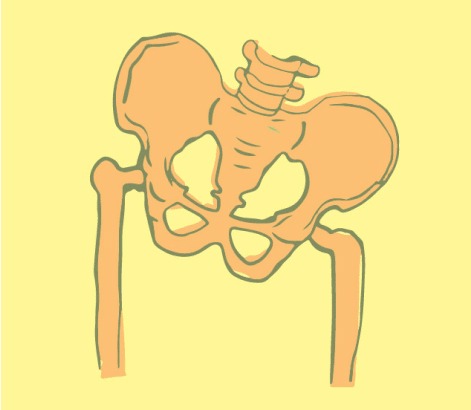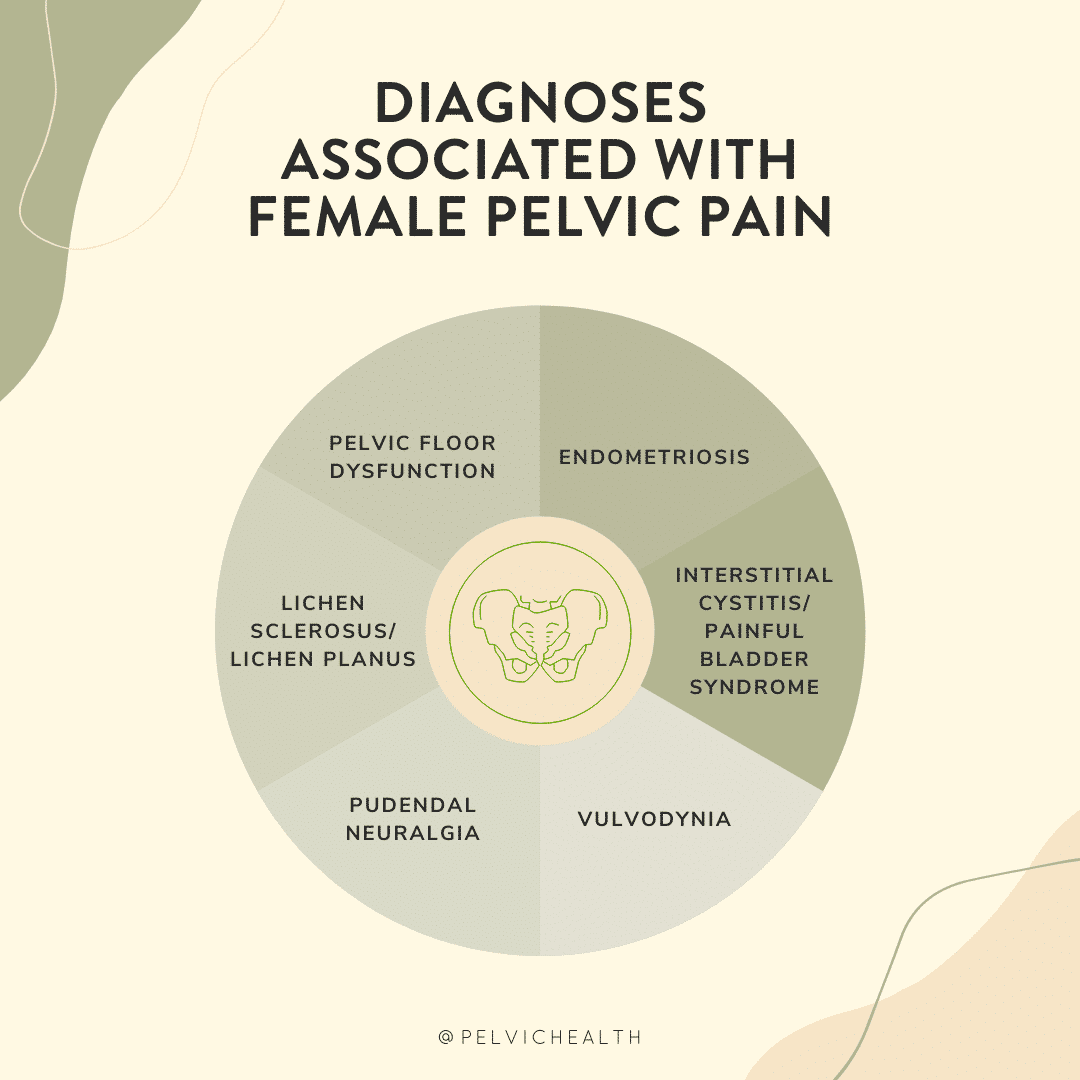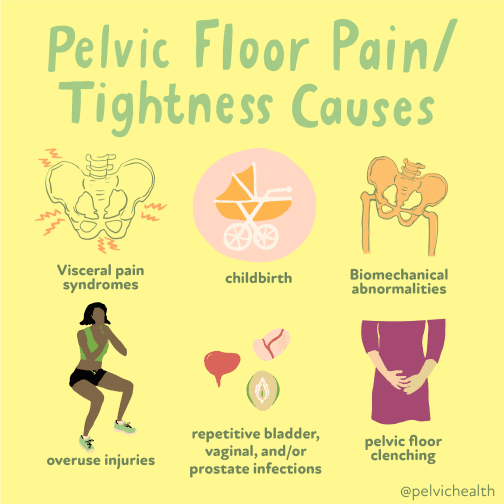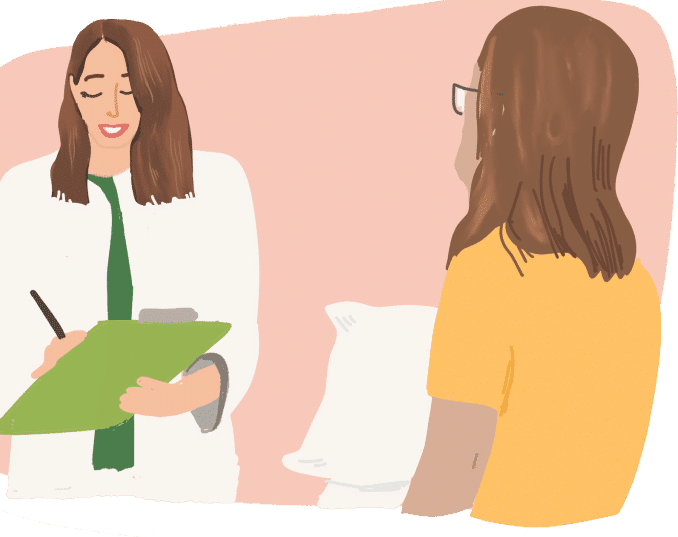

Symptoms
- Pelvic pain typically involves sensations such as burning, itching, aching, or other forms of discomfort in the vulva, vagina, perineal, and/or anal area.
- Women dealing with pelvic pain commonly experience discomfort during intercourse, heightened sensitivity when wearing pants and/or underwear, and pain while sitting.
- Exercise may trigger or worsen pelvic pain symptoms.
- Alongside pelvic pain, women may also encounter urinary urgency, frequency, pain during urination, and/or urinary leakage.
- Abdominal bloating, gastrointestinal distress, and constipation are additional challenges that women with pelvic pain may face.
- Symptoms can be provoked, occurring during activities like penetrative intercourse or tampon insertion, or unprovoked and spontaneous.
- Pelvic pain symptoms can manifest intermittently or persist constantly.

Symptoms
- Pelvic pain typically involves sensations such as burning, itching, aching, or other forms of discomfort in the vulva, vagina, perineal, and/or anal area.
- Women dealing with pelvic pain commonly experience discomfort during intercourse, heightened sensitivity when wearing pants and/or underwear, and pain while sitting.
- Exercise may trigger or worsen pelvic pain symptoms.
- Alongside pelvic pain, women may also encounter urinary urgency, frequency, pain during urination, and/or urinary leakage.
- Abdominal bloating, gastrointestinal distress, and constipation are additional challenges that women with pelvic pain may face.
- Symptoms can be provoked, occurring during activities like penetrative intercourse or tampon insertion, or unprovoked and spontaneous.
- Pelvic pain symptoms can manifest intermittently or persist constantly.

Many individuals only recognize their symptoms when they come across our website, blog, or social media. Some have a diagnosis but lack a local pelvic floor physical and occupational therapists. Others with a therapist feel stuck or don’t notice improvement. Some seek opinions from other trusted experts, and in uncertain times, some prefer not to leave their homes. Whatever your needs, we’re here and ready to assist!
Our team specializes in various aspects of pelvic floor disorders. We are available to assist you through both in-person and virtual appointments. Please be aware that virtual visits require advance payment and are non-refundable. Rest assured, we are here to support you.
Associated Diagnoses
Conditions like Endometriosis, Vulvodynia, Interstitial Cystitis/Painful Bladder Syndrome, Pudendal Neuralgia, Lichen Sclerosus, Lichen Planus, and Irritable Bowel Syndrome are commonly linked with pelvic pain and pelvic floor dysfunction.


Causes of Pelvic Pain
- Repetitive vaginal and/or bladder infections and/or gynecologic, urologic, dermatologic or gastrointestinal conditions
- The majority of women with pelvic pain have pelvic floor dysfunction
- Prescription medications such as oral contraceptives, acne medications, and hormonal suppressive therapies for diseases such as Endometriosis and Polycystic Ovarian Syndrome (PCOS)
- Surgical trauma (childbirth, pelvic organ prolapse repair, hysterectomy)
- Orthopedic injuries or traumas
- Biomechanical or structural dysfunction (hip dysfunction, sacro-iliac joint dysfunction, piriformis syndrome, scoliosis, leg length discrepancy)
- Vaginal childbirth
- Menopause
- Genital cutting or genital mutilation
Causes of Pelvic Pain
- Repetitive vaginal and/or bladder infections and/or gynecologic, urologic, dermatologic or gastrointestinal conditions
- The majority of women with pelvic pain have pelvic floor dysfunction
- Prescription medications such as oral contraceptives, acne medications, and hormonal suppressive therapies for diseases such as Endometriosis and Polycystic Ovarian Syndrome (PCOS)
- Surgical trauma (childbirth, pelvic organ prolapse repair, hysterectomy)
- Orthopedic injuries or traumas
- Biomechanical or structural dysfunction (hip dysfunction, sacro-iliac joint dysfunction, piriformis syndrome, scoliosis, leg length discrepancy)
- Vaginal childbirth
- Menopause
- Genital cutting or genital mutilation

Diagnostic Challenges
Research has found that women with pelvic pain often experience delays in receiving a proper diagnosis. It can take up to five years for a diagnosis, but for women with Endometriosis, it can take up to 11 years. This is because the symptoms of pelvic pain can be mistaken for other conditions such as urinary tract infections, yeast infections, bladder infections, and sexually transmitted infections. When the pelvic floor is the cause, diagnostic tests for these infections come back negative, causing confusion for both the medical provider and the patient. Many medical providers are not aware that pelvic floor dysfunction can be a source of pelvic pain, and it is not something that women typically consider as a cause for their symptoms. In fact, most patients have no knowledge of their pelvic floor until problems arise.
Diagnostic Challenges
Research has found that women with pelvic pain often experience delays in receiving a proper diagnosis. It can take up to five years for a diagnosis, but for women with Endometriosis, it can take up to 11 years. This is because the symptoms of pelvic pain can be mistaken for other conditions such as urinary tract infections, yeast infections, bladder infections, and sexually transmitted infections. When the pelvic floor is the cause, diagnostic tests for these infections come back negative, causing confusion for both the medical provider and the patient. Many medical providers are not aware that pelvic floor dysfunction can be a source of pelvic pain, and it is not something that women typically consider as a cause for their symptoms. In fact, most patients have no knowledge of their pelvic floor until problems arise.
Treatment:
How We Can Help You

Find relief from pelvic pain with a specialized pelvic floor physical and occupational therapists. Our team understands your frustration and is here to support you. You can receive healthcare services from home through Telehealth. This convenient virtual option provides answers to your questions about symptoms and overall health. In the virtual consultation, our medical professional will tell you what to do.
During the evaluation, we thoroughly review your history, symptoms, previous diagnoses, and treatment experiences. Our physical and occupational therapists conducts a comprehensive examination of muscles, tissues, joints, nerves, and movement patterns. Afterward, we discuss the findings and develop a personalized assessment and treatment plan. Typically, treatment involves one to two sessions per week for about 12 weeks. Additionally, we provide a home exercise program to complement your in-person sessions and work closely with your treatment team for coordinated recovery. Regain control and live your best life with our expert care.
Need assistance?

Treatment:
How We Can Help You
Find relief from pelvic pain with a specialized pelvic floor physical and occupational therapists. Our team understands your frustration and is here to support you. You can receive healthcare services from home through Telehealth. This convenient virtual option provides answers to your questions about symptoms and overall health. In the virtual consultation, our medical professional will tell you what to do.
During the evaluation, we thoroughly review your history, symptoms, previous diagnoses, and treatment experiences. Our physical and occupational therapists conducts a comprehensive examination of muscles, tissues, joints, nerves, and movement patterns. Afterward, we discuss the findings and develop a personalized assessment and treatment plan. Typically, treatment involves one to two sessions per week for about 12 weeks. Additionally, we provide a home exercise program to complement your in-person sessions and work closely with your treatment team for coordinated recovery. Regain control and live your best life with our expert care.
Need assistance?
How Can We Help You?
Please use the form below to send us any questions or comments. You must include your e-mail address in order for us to send a response. Please be assured that all of your information will be kept confidential.

Join The Newsletter. Win a copy of our book, “Pelvic Pain Explained!”
We love getting to know our website visitors. Please tell us a little bit about yourself and get the latest info via PHRC e-newsletter!
*Subscribers automatically eligible to win our book, “Pelvic Pain Explained.”
At its heart, Pelvic Pain Explained is the story of how patients develop pelvic pain, the challenges patients and providers face throughout the diagnosis and treatment process, the difficult task of sifting through the different available treatment options, and the impact that an “invisible” condition has on a patient’s life and relationships, and much more.


